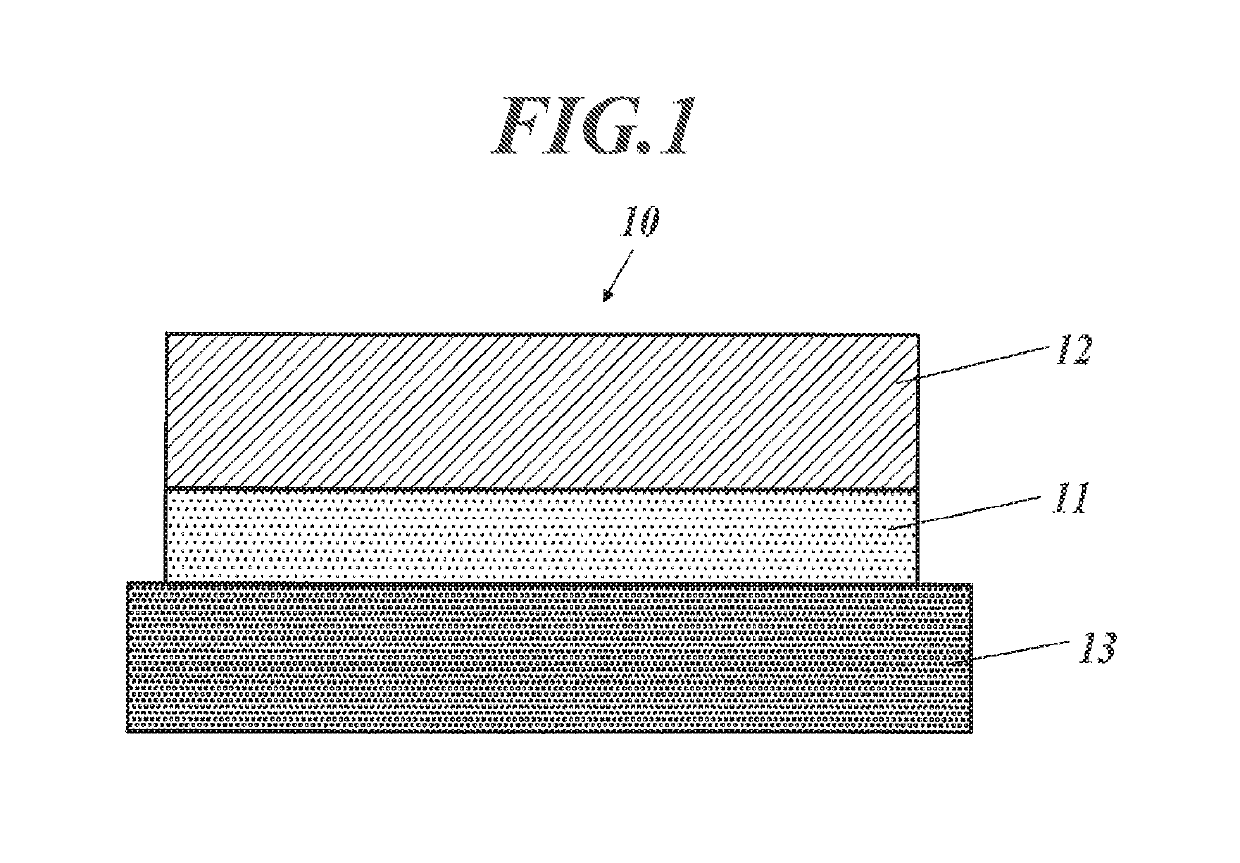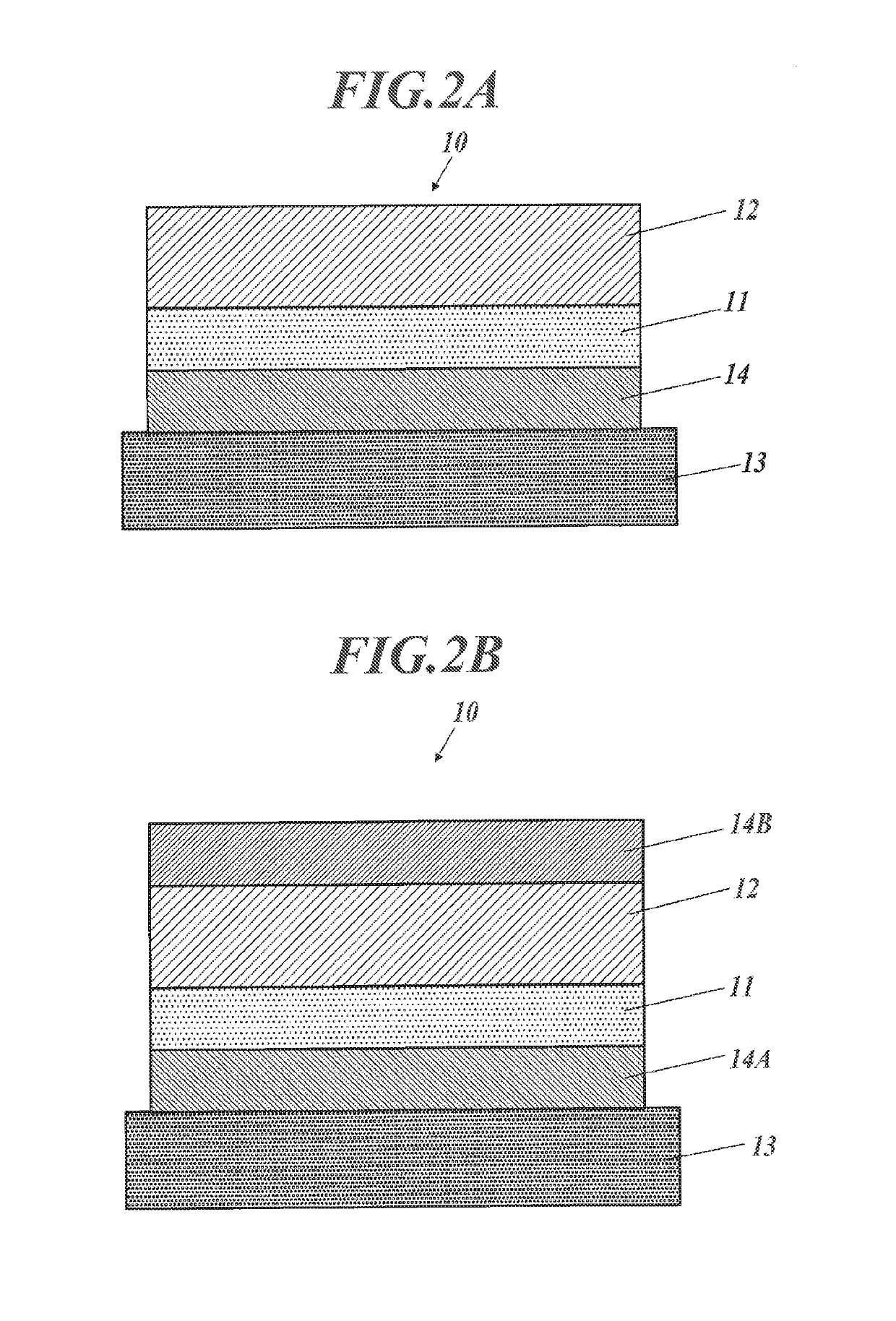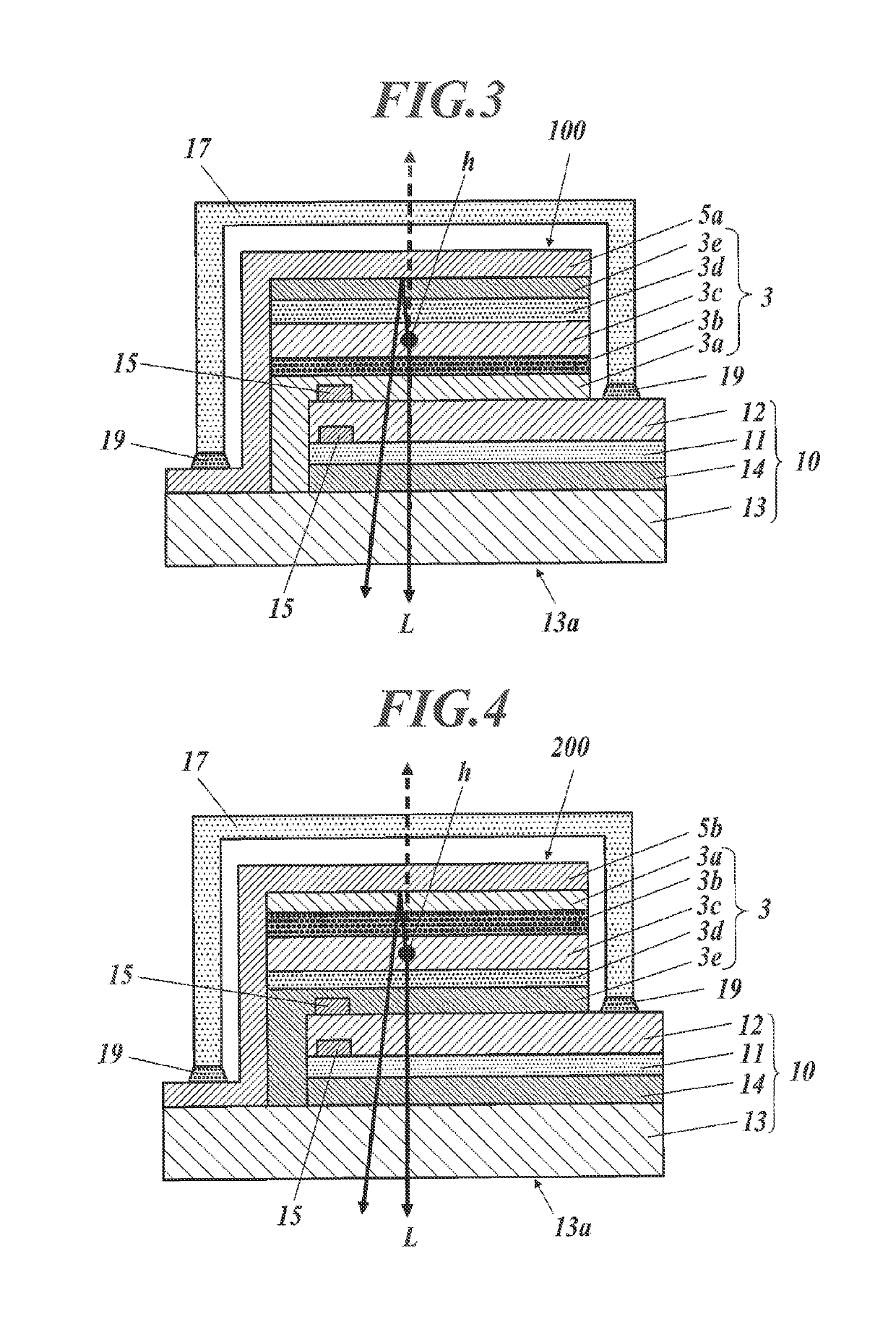Transparent electrode and electronic device
a transparent electrode and electronic device technology, applied in the direction of glass/slag layered products, chemistry apparatus and processes, other domestic articles, etc., can solve the problems of high material cost, insufficient resistance reduction, and difficulty in using resin substrates at such temperature conditions, and achieve excellent transparency, low driving voltage, and high conductivity
- Summary
- Abstract
- Description
- Claims
- Application Information
AI Technical Summary
Benefits of technology
Problems solved by technology
Method used
Image
Examples
first embodiment
[First Embodiment of Organic EL Element]
[Structure of Organic EL Element]
[0124]FIG. 3 is a cross sectional view illustrating the structure of a first embodiment of an organic EL element using the transparent electrode (10) of the present invention as an example of an electronic device of the present invention.
[0125]Hereinafter, the structure of the organic EL element is described with reference to FIG. 3.
[0126]As illustrated in FIG. 3, an organic EL element (100) is disposed on a transparent substrate (13, it may be called as a base), and on the transparent substrate (13), it is disposed a transparent electrode (10) that is illustrated in FIG. 2A. On the transparent substrate that is a base (13) for the transparent electrode, there are laminated an optical adjusting layer (14), an organic functional layer (11) and a conductive layer (12). On this, there are laminated an organic light emitting layer unit (3) and a counter electrode (5a).
[0127]In this organic EL element (100), as the ...
second embodiment
[Second Embodiment of Organic EL Element]
[Structure of Organic EL Element]
[0222]FIG. 4 is a schematic cross-sectional view illustrating an organic EL element of a second embodiment using the above-described transparent electrode (10) as an example of an electronic device of the present invention. Difference between an organic EL element (200) of the second embodiment illustrated in FIG. 4 and the organic EL element (100) of the first embodiment described with reference to FIG. 3 is that the organic EL element (200) uses a transparent electrode (10) as a cathode.
[0223]Detailed description about components which are the same as those of the first embodiment is not repeated, and components specific to the organic EL element (200) of the second embodiment are described below.
[0224]As illustrated in FIG. 4, the organic EL element (200) is disposed on a transparent substrate (13), and as with the first embodiment, it uses the above-described transparent electrode (10) of the present inven...
example 1
«Production of Transparent Electrode»
[0246]As described below, transparent electrodes 101 to 121 each were produced in such a way that an area of a conductive region was 5 cm×5 cm.
[Production of Transparent Electrode 1]
[0247]A substrate composed of transparent alkali-free glass (having a thickness of 0.5 μm, in Tables 1 and 2, it is indicated simply “glass”) was fixed to a substrate holder of a vacuum deposition device (BMC-800T made of Shincron Co. Ltd.), and the substrate holder was mounted in a vacuum tank of the vacuum deposition device. In addition, silver (Ag) was placed in a tungsten resistance heating boat, and the heating boat was mounted in the vacuum tank. Next, after the pressure of the vacuum tank was reduced to 4×10−4 Pa, the resistance heating boat was electrically heated. Thus, a transparent electrode 1 having a single-layer structure composed of silver having a thickness of 10 nm was formed on the base at a deposition rate of 0.1 nm / sec to 0.2 nm / sec.
[Production of ...
PUM
| Property | Measurement | Unit |
|---|---|---|
| temperature | aaaaa | aaaaa |
| light transmittance | aaaaa | aaaaa |
| thickness | aaaaa | aaaaa |
Abstract
Description
Claims
Application Information
 Login to View More
Login to View More - R&D
- Intellectual Property
- Life Sciences
- Materials
- Tech Scout
- Unparalleled Data Quality
- Higher Quality Content
- 60% Fewer Hallucinations
Browse by: Latest US Patents, China's latest patents, Technical Efficacy Thesaurus, Application Domain, Technology Topic, Popular Technical Reports.
© 2025 PatSnap. All rights reserved.Legal|Privacy policy|Modern Slavery Act Transparency Statement|Sitemap|About US| Contact US: help@patsnap.com



